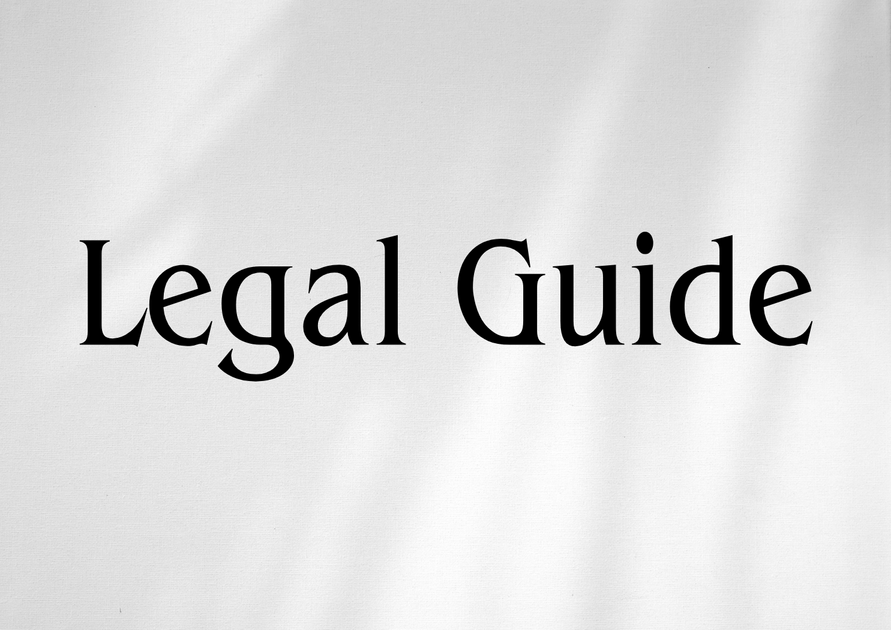Introduction: The Critical Role of Air Accident Investigation in Saudi Law and Its Significance for UAE Stakeholders
Air transport remains a cornerstone of the Gulf region’s economy, connecting global businesses, facilitating tourism, and underpinning ambitious projects like Saudi Vision 2030 and the UAE’s vision for an aerospace hub. However, with the increased volumes of commercial, cargo, and private flights, the risk of aviation incidents—though statistically rare—cannot be overlooked. Robust, transparent, and effective air accident investigation procedures are essential, not just for upholding public trust, but for ensuring operational safety and legal clarity for airlines, airports, regulators, and multinational enterprises working in or with Saudi Arabia.
For UAE-based organisations, understanding Saudi Arabia’s frameworks governing the response to air accidents is critical. This is especially true as regulation evolves both in the Kingdom and across the GCC. Recent updates, including the application of the Kingdom of Saudi Arabia Civil Aviation Law (Royal Decree No. M/44, 2021) and regulatory guidance from the General Authority of Civil Aviation (GACA), have set new standards for air accident investigations. These changes also respond to global developments, harmonising with conventions such as the International Civil Aviation Organisation (ICAO) Annex 13.
This article offers a comprehensive, consultancy-grade analysis of Saudi Arabia’s air accident investigation framework, tailored for UAE legal and aviation professionals, in-house counsel, HR managers, and business executives overseeing air operations or partnerships in the Kingdom. By dissecting the legal provisions, reviewing practical implications, and highlighting compliance strategies, we empower stakeholders to mitigate risk, ensure legal alignment, and achieve commercial objectives in a dynamic regulatory environment.
Table of Contents
- Overview of Saudi Air Accident Investigation Law
- Legal Framework and Regulatory Bodies
- Core Procedures for Air Accident Investigation
- Comparative Analysis: Saudi and UAE Air Accident Investigation Law
- Case Studies and Hypothetical Scenarios
- Risks, Liabilities, and Compliance Strategies
- Professional Recommendations and Best Practices
- Conclusion: Forward-Looking Implications for UAE Clients
Overview of Saudi Air Accident Investigation Law
Historical Context and Modernisation
Saudi Arabia’s approach to investigating aviation accidents has undergone a significant transformation over the past decade. Earlier frameworks relied heavily on internal aviation authority protocols, but after a series of notable incidents and mounting international expectations, Saudi Arabia overhauled its legal regime to align with ICAO’s global standards. Today, the 2021 Civil Aviation Law (Royal Decree No. M/44), together with GACA’s Executive Regulations (including the GACA Safety Investigation and Accident Prevention Circulars, 2022), forms the basis of the Kingdom’s air accident investigation system.
Why This Matters to UAE Businesses
The highly interconnected nature of UAE-Saudi air travel means that UAE-registered carriers, operators, ground handlers, and technical service providers routinely operate in Saudi airspace and territory. Consequently, any aviation incident or accident in Saudi Arabia involving a UAE entity falls within the ambit of Saudi investigation laws. Understanding these laws is vital for:
- Ensuring timely and lawful cooperation during investigations;
- Protecting company and crew legal rights;
- Upholding insurance and liability positions;
- Avoiding criminal or administrative sanctions for non-compliance.
Legal Framework and Regulatory Bodies
Primary Legislation: The Saudi Civil Aviation Law and GACA Authority
1. Royal Decree No. M/44 (2021) – Civil Aviation Law
This law codifies procedures to manage and investigate air accidents, setting out the legal duties of aircraft operators, crew, and related third parties. It incorporates ICAO Annex 13 and is supported by GACA Executive Regulations.
2. General Authority of Civil Aviation (GACA)
GACA serves as the central regulatory entity responsible for aviation safety oversight, accident investigation, and coordination with international bodies. Notably, the Safety Investigation Bureau (SIB)—a division within GACA—is designated to conduct independent investigations, much like the UAE’s GCAA Air Accident Investigation Sector.
| Legal Instrument | Year | Main Purpose |
|---|---|---|
| Royal Decree No. M/44 | 2021 | Core aviation law, including accident investigation |
| GACA Executive Regulations | 2022 | Procedural, jurisdictional, and technical standards |
| GACA SIB Protocols | 2022 | Investigation processes and reporting obligations |
| ICAO Annex 13 (as implemented) | 2021-22 | International investigation requirements |
Jurisdiction and Applicability
The Saudi legal framework applies to:
- All civil aviation accidents and serious incidents within Saudi territory;
- Saudi-registered aircraft irrespective of location;
- Foreign-registered aircraft involved in accidents affecting Saudi citizens, property, or interests.
This extraterritorial reach is especially relevant for UAE airlines and lessors with operations in or over Saudi Arabia.
Core Procedures for Air Accident Investigation
Step-by-Step Breakdown
The air accident investigation process under Saudi law is structured, multi-staged, and designed to ensure independence, transparency, and international cooperation. The main procedures are as follows:
1. Immediate Notification and Preservation of Evidence
Upon occurrence of an accident, the aircraft operator or relevant agency must notify GACA’s SIB immediately, using established communication protocols. Any action to move or alter wreckage, except to save life or prevent further damage, is prohibited without SIB authorisation (Article 177, Civil Aviation Law; Section 2.2, GACA SIB Protocols).
- Practical Insight: UAE-based companies must train local staff on Saudi notification timelines and preservation obligations. Delays or failure to preserve evidence may lead to significant legal exposure.
2. Initial Assessment and Investigation Launch
SIB investigators are dispatched to the site. The investigation team includes technical, legal, and operational experts. SIB assumes full control of the investigation area and evidence collection, in coordination with police, emergency services, and (if cross-border issues arise) consular officials.
3. Stakeholder Engagement and Rights
Parties entitled to participate (the “accredited representatives” per ICAO definition) include:
- State of Registry (e.g., UAE for Emirates- or Etihad-operated aircraft);
- State of Operator or Manufacturer;
- States whose citizens were injured or killed.
Accredited representatives may observe and provide input throughout the investigation but must not interfere with Saudi SIB authority.
4. Analysis, Reporting, and Recommendations
The SIB investigates technical, human, regulatory, and environmental aspects. Preliminary reports must be issued within defined periods (30 days from occurrence, as per ICAO), with final reports usually within twelve months. These reports contain:
- Findings of fact;
- Contributory factors;
- Safety recommendations;
- Non-attribution policy, protecting individual witnesses from prosecution based solely on evidence disclosed in the investigation (Article 188, Civil Aviation Law).
5. International Coordination
Given the cross-border implications of modern aviation, Saudi law explicitly provides for collaboration with regional and international authorities, including the UAE’s GCAA, pursuant to Article 194 of the Civil Aviation Law and GACA Circular 01/2022.
Visual Suggestion
Suggested Placement: A process flow diagram visually outlining the steps in an air accident investigation, from notification to final reporting, would aid clarity for executive readers.
Comparative Analysis: Saudi and UAE Air Accident Investigation Law
Given the frequency of bilateral flights and shared commercial interests, it is instructive to compare the Saudi and UAE air accident investigation frameworks. Both countries are ICAO members, with a commitment to harmonised standards. However, practitioners should note the distinct nuances and compliance demands of each jurisdiction.
| Aspect | Saudi Law (Civil Aviation Law 2021) | UAE Law (Federal Law No. 20 of 1991, Updated 2023) |
|---|---|---|
| Main Regulatory Body | GACA SIB | GCAA Air Accident Investigation Sector |
| Reporting Timeline | Immediate (<24 hours) to GACA SIB | Immediate (<24 hours) to GCAA |
| Accredited Participation | Permitted per ICAO standards | Permitted per ICAO standards |
| International Cooperation | Mandatory (Article 194, Civil Aviation Law) | Mandatory (Federal Decree No. 4/2023) |
| Protection of Testimony | Explicit ‘non-attribution’ provision | Explicit witness protection (Article 33, Federal Law No. 20/1991) |
| Sanctions for Non-Compliance | Fines, operational suspension, criminal liability | Fines, licence withdrawal, potential criminal charges |
Companies operating across both jurisdictions must be prepared for rapid cross-notification and shared investigations, ensuring internal protocols reflect both Saudi and UAE requirements.
Case Studies and Hypothetical Scenarios
Case Study: Joint Saudi-UAE Investigation
Consider a scenario where a UAE-registered aircraft operating a commercial service to Riyadh is involved in a runway excursion at King Khalid International Airport. Under Article 172 of Saudi Civil Aviation Law, GACA SIB immediately assumes investigation authority, but by virtue of ICAO Annex 13 and bilateral clarity, the UAE GCAA’s designated representatives are granted observer status and access to factual evidence. The operator must closely liaise with both agencies, managing competing reporting demands and strictly observing local non-disclosure rules regarding investigation details. Failure to do so could result in liability both in Saudi courts and under UAE aviation law—for instance, if initial statements are prematurely shared with the UAE or public without Saudi consent.
Hypothetical Example: Evidence Tampering Risk
Imagine a situation where ground personnel, unaware of the law, move aircraft debris prior to the arrival of SIB inspectors in Jeddah. Despite innocuous intent (e.g., clearing a taxiway for emergency vehicle access), this triggers Article 191 liability, exposing the operator to severe administrative fines (potentially exceeding SAR 1 million) and criminal referral for obstructing a safety investigation. Proper in-house training, legal briefings, and crisis simulation exercises are thus a compliance imperative for all staff operating on Saudi soil.
Risks, Liabilities, and Compliance Strategies
Risks of Non-Compliance
- Pecuniary Penalties: GACA may impose substantial fines for failure to notify, preserve evidence, or cooperate (e.g., up to SAR 5 million for major infringements).
- Operational Suspension: Licences and operational permits can be suspended or revoked pending investigation outcome.
- Civil and Criminal Liability: Individuals and companies may face civil claims from victims or criminal prosecution for willful obstruction or destruction of evidence.
- Reputational Harm: Mishandling investigations or noncompliance may cause lasting damage to carrier, airport, or partner reputation, risking contract terminations or insurance disputes.
Visual Suggestion
Suggested Placement: A penalty comparison table breaking down fine levels and sanctions under both Saudi and UAE law.
| Compliance Task | Status Check | Lead Responsibility |
|---|---|---|
| Immediate notification protocols | Implemented / Pending | Legal Counsel / Ops Manager |
| Staff training on evidence preservation | Implemented / Pending | HR, Local Ops Lead |
| Pre-assignment legal briefings | Implemented / Pending | Legal Counsel |
| Cross-border reporting templates | Implemented / Pending | Compliance Team |
| Insurance policy review (compliance clauses) | Implemented / Pending | Risk Manager / Broker |
Recommended Compliance Strategies
- Establish dual-jurisdiction response protocols aligned with both GACA and GCAA demands.
- Conduct regular legal and operational simulations, involving staff and ground services.
- Retain specialised aviation legal counsel for real-time advice during crisis situations.
- Review and reinforce insurance policies to reflect obligations under both Saudi and UAE law.
- Monitor evolving GACA circulars and guidance, ensuring policy updates are rapidly integrated.
Professional Recommendations and Best Practices
For UAE legal and business professionals engaging with Saudi aviation operations, the following best practices are essential to maintain compliance and manage risk:
- Contractual Clauses: Insert specific provisions in supplier and crew contracts mandating strict compliance with Saudi notification, cooperation, and evidence preservation laws.
- On-Call Aviation Legal Teams: Set up on-call expert panels—either in-house or via trusted GCC law firms—to ensure immediate access to legal guidance when incidents occur.
- Data Protection and Confidentiality: Adopt robust protocols for handling sensitive investigation data, respecting both Saudi non-disclosure rules and UAE corporate governance standards.
- Liaise with Consular Authorities: Promptly notify relevant embassies or consulates if a UAE citizen is involved in an incident in Saudi Arabia, ensuring compliance with consular and diplomatic protocols.
- Ongoing Legal Education: Mandate crew and staff participation in regular, certified training on latest air accident investigation developments in Saudi and the UAE.
Conclusion: Forward-Looking Implications for UAE Clients
The landscape of air accident investigation in Saudi Arabia is rapidly evolving, driven by regulatory modernisation and international harmonisation. UAE-based organisations must take a proactive, informed, and strategic approach to compliance. This not only protects legal and commercial interests but enhances operational safety and resilience in a high-risk environment.
As Saudi GACA and UAE GCAA continue to collaborate and update their regulatory frameworks, it is anticipated that joint technical committees, reciprocal notification protocols, and shared digital investigation platforms will become more commonplace. Staying ahead requires:
- Continuous monitoring of legal updates via official platforms such as the UAE Federal Legal Gazette and GACA advisories;
- Developing agile incident response plans that integrate cross-border legal expertise;
- Maintaining open communication channels with regulatory authorities in both jurisdictions.
Ultimately, by embedding these legal and operational best practices, UAE aviation ecosystem players can ensure compliance with evolving Saudi law, safeguard their reputational and financial interests, and contribute to a globally competitive, safe air transport environment across the GCC.



